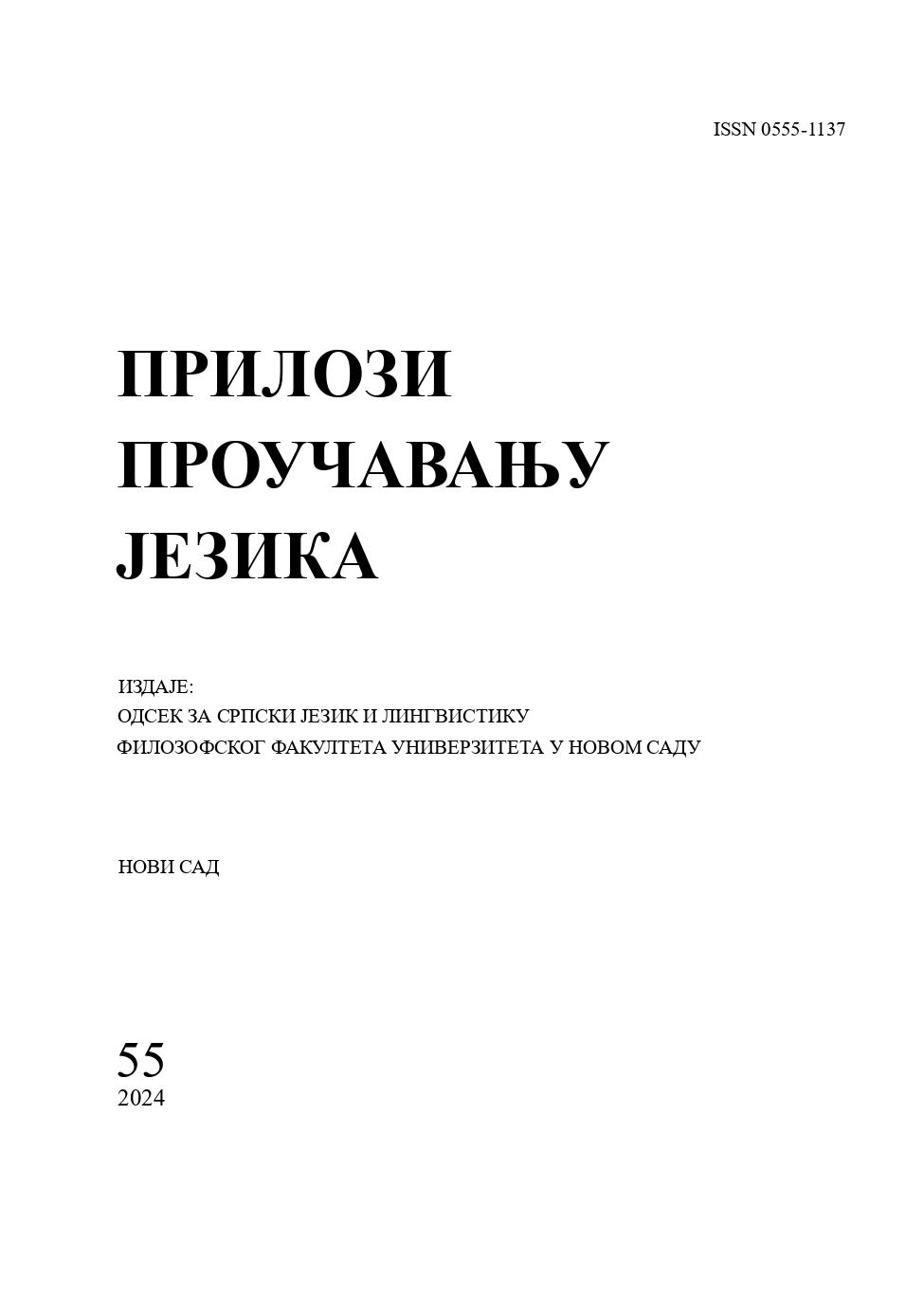О ПРИДЕВСКОМ ВИДУ У ЛОЗНИЧКОМ ГОВОРУ
ON THE ADJECTIVAL ASPECT IN THE SPEECH OF LOZNICA
Author(s): Branislav VeselinovićSubject(s): Morphology, South Slavic Languages, Philology
Published by: Филозофски факултет, Универзитет у Новом Саду
Keywords: Šumadija-Vojvodina dialect; Eastern Herzegovinian dialect; urban speech; language change; variations; distributive range; complementary distribution; contrasting distribution; post-accentual lengths;
Summary/Abstract: The subject of research is the distribution of adjectival aspect in the speech of Loznica. The main aim of the research is to describe the contemporary state of the Loznica speech in terms of the distribution of adjectival aspect, as well as to compare inter-speaker variations with the state of adjectival aspect recorded in the surrounding rural dialects and the standard Serbian language. An empirical inquiry into these issues could determine which aspectual distinctive features and distributional models of the two adjectival aspects are possible in the Loznica speech. The corpus consists of a transcript of a sociolinguistic interview with three women from Loznica of different ages. The results of the analysis showed that, contrary to surrounding rural dialects, the distinction in endings between definite and indefinite adjectival aspect is preserved only in the nominative singular masculine, whereas the aspectual distinction is maintained on the prosodic level. Therefore, the aspectual markers are both the accent and the post-accent length on the ending. In other words, hybrid formations arise in the declension of adjectives of indefinite aspect – form with the ending from pronominal-adjectival declension and prosodic realization from the nominal declension. Furthermore, syntactic distribution depends on the hierarchical status of the sentence element: in first-level sentence elements, it is primarily complementary, while in second-level elements, the distribution is generally contrastive. In this case, the choice of aspect depends on both semantic and pragmatic factors. Regarding intergenerational variation of adjectival aspect, it is noticeable, in line with different intralinguistic tendencies and extralinguistic factors, that in the speech of the two older informants, the distribution of adjectival aspect is consistently complementary and contrastive. However, in the speech of the youngest informant, cases of free variation of definite and indefinite aspect arise, thus indicating the beginning of an ongoing language change.
Journal: Прилози проучавању језика
- Issue Year: 55/2024
- Issue No: 1
- Page Range: 213-240
- Page Count: 27
- Language: Serbian

